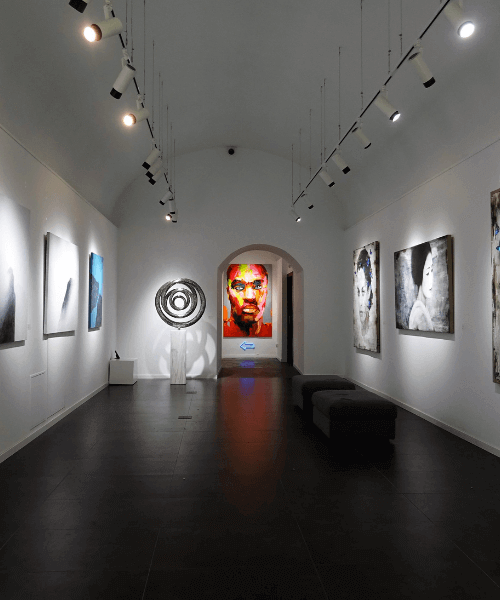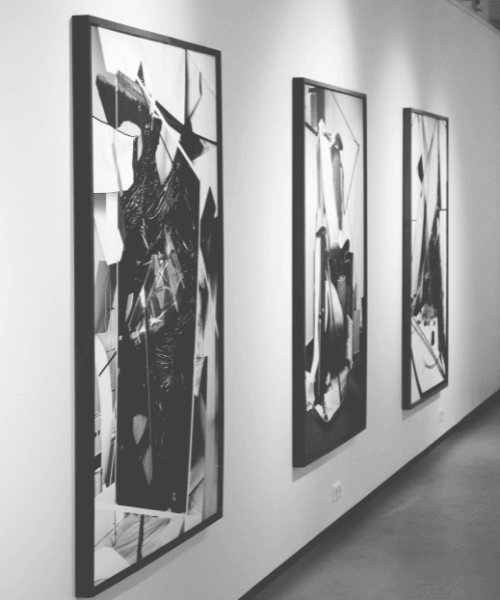A brief history of modern art
Technological advances, societal changes and innovations have influenced the course of modern art history.
How did artists take hold of this new modernity?
How did the works created in these years represent the changing world?
Appeared in Paris at the end of the 19th century, modern art was born with realism and ended with the appearance of the pop art movement.
Before choosing a work of modern art, we invite you to discover this fascinating artistic period.
Here is a brief history of modern art, from its birth to the announcement of contemporary art.
Summary
- The birth of modern art
- Modern art, a succession of innovative movements
The birth of modern art
The history of modern art is related to its time.
At the end of the 19th century, major transformations in society, whether in politics or linked to the new industrial era, appeared. Influenced by their modern life, the artists then sought to break with the academic artistic codes in force.
The historical context of this end of the 19th century
In Europe, the 1850s were marked by the advent of the industrial revolution.
The upheavals bring about enormous changes in society and bring about unparalleled technological advancements.
Artists, like the population, are affected.
Inspired by this modernity, they invent new artistic techniques and choose subjects related to their daily life. The invention of photography also transformed their view of the world.
An art breaking with artistic academic codes
Whether in the field of painting, sculpture or architecture, modern artists seek to innovate in their arts.
The realist movement, represented by Gustave Courbet, Honoré Daumier or even Jean-François Millet, developed from the 1830s and revolted against the academic rules imposed until then.
The painter Édouard Manet, with his painting Le Déjeuner surherbe, caused a scandal at the Salon des Refusés in Paris in 1863.
Today, this work is on display at the Musée d'Orsay and attracts many visitors and art lovers.
With the impetus of this movement, a rich artistic period begins.
Modern art, a succession of innovative movements
This great period of modern art brings together quite dissimilar artistic movements.
Their common point is to be inspired and to question their principles mutually.
.png)

The beginnings of modern art: from Impressionism to Art Nouveau
The beginnings of modern art: from Impressionism to Art Nouveau
In parallel with realism, Impressionism developed and, following it, Post-Impressionism, Neo-Impressionism and Fauvism.
Here are their main characteristics.
Impressionism
With the invention of tube painting, the Impressionists took out their easels and painted landscapes in the open air.
They capture scenes from everyday life by capturing the changes in light in their paintings.
Their practice, breaking with academic painting and in the continuity of the movement of realism, marks the beginning of the history of modern art.
Le postimpressionnisme, le néo-impressionnisme et le fauvisme
Post-Impressionism, Neo-Impressionism and Fauvism
Post-Impressionism and Neo-Impressionism are the movements that follow Impressionism.
Inspired by previous artistic research while challenging it, artists such as Paul Cézanne, Vincent Van Gogh, Henri de Toulouse-Lautrec or even Paul Signac continue the advances in the use of color in painting.
The painters of the Fauvism movement continue this work and use flamboyant colors in their works.
The new art
The style of Art Nouveau is manifested in Europe between the years 1895 and 1905, mainly in the fields of architecture and decorative arts.
The materials of this new industrial era allow radical transformations in technical possibilities.
The search for these artists consists in wanting to integrate beauty into everyone's daily life.
Hervé Guimard's metro stations in Paris, Émile Gallé's lighting and Alphonse Mucha's advertising posters bear witness to this.
From expressionism to surrealism
The avant-garde movements of the 20th century began with expressionism
Expressionism, Cubism and Futurism
Before the First World War, expressionism, cubism and futurism developed.
These three avant-garde movements set out to shake up the forms of representation in their usual style and to experiment with new techniques.
The exhibition of emotions for expressionism, the fragmentation of forms for cubism and the fascination for speed with regard to futurism are the three main contributions.
The Bauhaus
The Bauhaus was originally an art school founded in Weimar (Germany) in 1919 by architect Walter Gropius.
Its fundamental teaching consists in no longer distinguishing art and crafts, in no longer making a difference between the so-called major arts from those called minor.
The innovative reach of this school reaches all the arts, from architecture to typography.
Dadaism and Surrealism
During the 20th century, the Dada artist provokes and uses the absurd to denounce the values and models of traditional culture.
Widely influenced, the surrealists, following them, will continue this research while emphasizing the importance of dreams and the unconscious in creation.
The transition to contemporary art
The border between the history of modern art and that of contemporary art remains blurred.
The movements that follow are marked by World War II as Abstract Expressionism, born in New York around 1946.
Later, pop art is often considered the movement marking the birth of contemporary art.
Contemporary articles:
On the subject:
How to choose a modern artwork
find out more:



